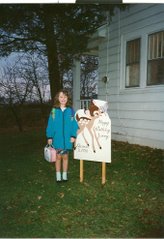Personal Learning Goal: To see if children need to be motivated to do everything
Objectives: (Attitudinally based) To use motivation in the field and see what form of motivation works the best
Methods: By taking annotated notes of children's reactions and performances I will be able to write a non biases report on how the children reacted. This will reinforce my learning from Woolfolk because I am a visual learner and I will have hands on experience to reflect to when I am teaching.
Assessment: I noted that the children, 7th and 8th grade conformation students at a lock-in, were very excited to be their in the first place which would affect whether the children were actually motivated or they were just excited to see what is next. But over all after one of the members on my outreach team set the stage for the activity, the children reacted positively. Watching the children's reactions also showed that the actual motivation was not the only thing that motivated them, but also the actual game. For an example, when the children found out that we are going to play Sardines they were already motivated, and did not need us to motivate them.
Reflection: During our lock-in we used multiple ways to motivate the children. In Woolfolk (374-376) he states that there are four general approaches to motivation. We used mostly behavioral approaches, reward and incentive, cognitive and social cognitive approaches, and social conceptions of motivation. With every motivation we also established goals for them in order for use to direct there attention, energize the effort, increase persistence, and promote the development of new knowledge and strategies (380). Over all I learned through this experience and the reading from Woolfolk that a positive reaction from a motivation has many variables but if done effectively can be more controlled in some ways.
Subscribe to:
Post Comments (Atom)

No comments:
Post a Comment